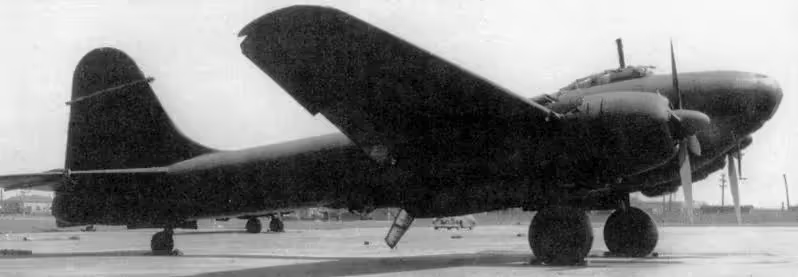Warplanes of Japan: Tachikawa Ki-74
Tachikawa Ki-74

(SDASM Photo)
The Tachikawa Ki-74 (Allied reporting name "Patsy") was a Japanese experimental long-range reconnaissance bomber of World War II. A twin-engine, mid-wing monoplane, it was developed for the Imperial Japanese Army Air Service but never deployed in combat. The Ki-74 was designed for high altitude operation with a pressurized cabin for its crew.
Though already conceived in 1939 as a long-range reconnaissance aircraft capable of reaching west of Lake Baikal when operating from bases in Manchukuo (Manchuria), the initial prototype Ki-74 only first flew as late as March 1944, after its development and primary mission requirement had been changed to capability of bombing and reconnaissance over the mainland United States.
The Ki-74 was powered by two 1,641 kW (2,201 hp) Mitsubishi Ha-211-I [Ha-43-I] radial engines. The subsequent two prototypes were powered by the turbo-supercharged Mitsubishi Ha-211-I Ru [Ha-43-II]; these experienced teething troubles and the following thirteen pre-production machines substituted the Ha-211 Ru engine for the lower-powered but more reliable turbo-supercharged Mitsubishi Ha-104 Ru (Army Type 4 1,900 hp Air Cooled Radial). The aircraft was fitted with self-sealing fuel tanks, armor and a pressurized cabin for its crew of 5.
The Ki-74 did not progress beyond developmental testing to see operational service in combat. Nevertheless, the Allies knew of the type's existence and assigned the codename "Patsy" after it was discovered that it was a bomber, not a fighter (previously it had been assigned the codename "Pat" by Allied Intelligence). (Wikipedia)

(IJAAF Photo)




(IJAAF Photos)
Tachikawa Ki-74 experimental long-range reconnaissance bomber, codenamed Patsy.




(USAAF Photos)
Tachikawa Ki-74 experimental long-range reconnaissance bomber, codenamed Patsy in USAAF markings. Four Ki-74 were brought to the USA, USAAF FE-2206 was scrapped at Newark, FE-2207 was scrapped at Middletown, FE-2208 was scrapped at Newark, and FE-2209 was scrapped at Newark.





